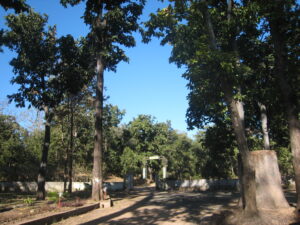Amarkantak: In search of solitude
As Azad Hind Express chugged out of howling Howrah station at 10pm, I said goodbye to Calcutta’s chaos and cacophony. A much-needed break I was looking for! What a relief!
Our destination: Amarkantak via Bilaspur
Objective: to attend the 151th birth anniversary celebrations of Swami Vivekananda at Ma Saradakanya Vidyapith (a tribal girls’ school) at Pondki, a sleepy village 12kms from Amarkantak. The school is run by septuagenarian Dr Prabir Sarkar.
The train reached Bilaspur (Chhattisgarh) the next day around 9am. Alok-da (a former South Eastern Coalfields Ltd senior official) was waiting at the station. This 60-something ‘young man’ always brims with energy. His warmth of feeling and hospitality would put any Calcutta-bred to shame! Alok-da drove us to his tastefully decorated house at Rajendranagar about 5kms from the station. We had our breakfast with mouth-watering idli and sambar bada. We had our bath and took our lunch with chicken curry and khicuri. (rice was also there)
We left Bilaspur for Amarkantak (about 120kms) by road at 4.30pm. We drove past Achanakmar Wildlife Sanctuary. Although our driver said he had seen wild boar or bear during the drive, we were not lucky enough to see any wild animals in the forest (well, we saw a few jackals scampering). The drive, however, was a lovely one except for a few kilometres which were potholed.
As I stepped on the school premises, I was reminded of Ralph Waldo Emerson’s words: “The purpose of life is not to be happy. It is to be useful, to be honorable, to be compassionate, to have it make some difference that you have lived and lived well”.
The nearest rail station of Amarkantak (3438 ft) is Pendra Road which is 22kms away. The nearest airport is Jabbalpur airport in the city of Jabbalpur, Madhya Pradesh (240 km). It is a pilgrim town in Anuppur District in MP.
Also called Teerthraj (the king of pilgrimages), Amarkantak has a unique natural heritage and is the meeting point of the Vindhyas and the Satpuras, with the Maikal Hills being the fulcrum. This is where the river Narmada, the river Son and the river Johila emerge.
A little distance from Gaumukh, the source of the Narmada, is Kapildhara, where the Narmada leaves Anuppur District and enters Dindori District by cascading more than 20 metres down a sheer basalt rock. Locals believe that a mere sight of the Narmada is more than enough to wash away one’s sins than taking 1000-time dip in the holy water of the river Ganges at the Varanasi Ghat. Four kilometres from Amarkantak is Kabir Chabutara, the exact junction point of Dindori, Bilaspur and Anuppur districts. As the source of the Narmada, which is more than 150 million years older than the Ganges and is considered by many Hindus to be the most sacred of all the rivers of India, Amarkantak itself is sacred to the Hindus and is deemed to be a doorway to Nirvana.
In these hills dwell some of the most primitive tribals of MP, the Hill Korwas and Pandavas. Even today the Pandavas run away if they see any strangers approaching their village.
(To be continued)





